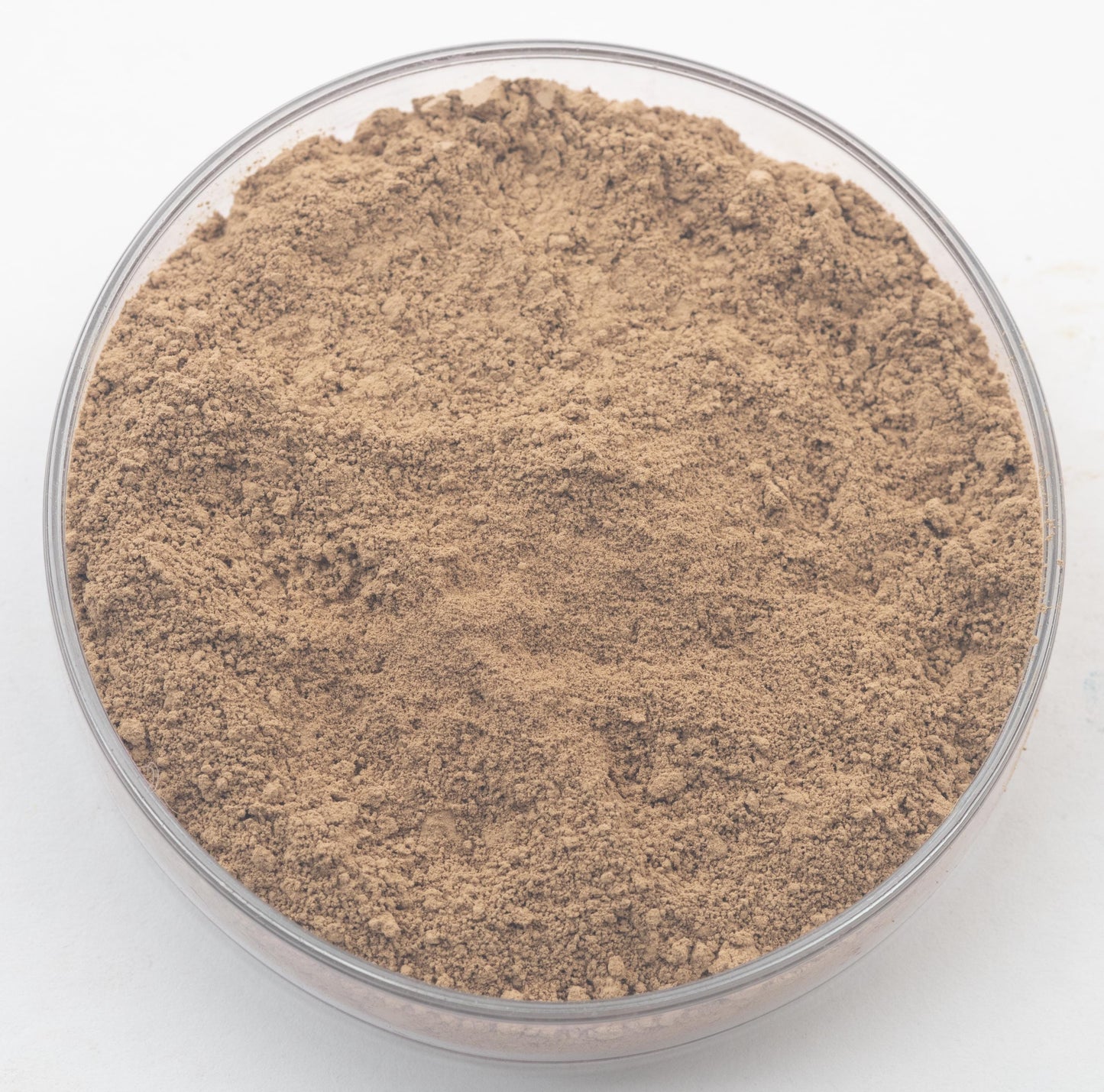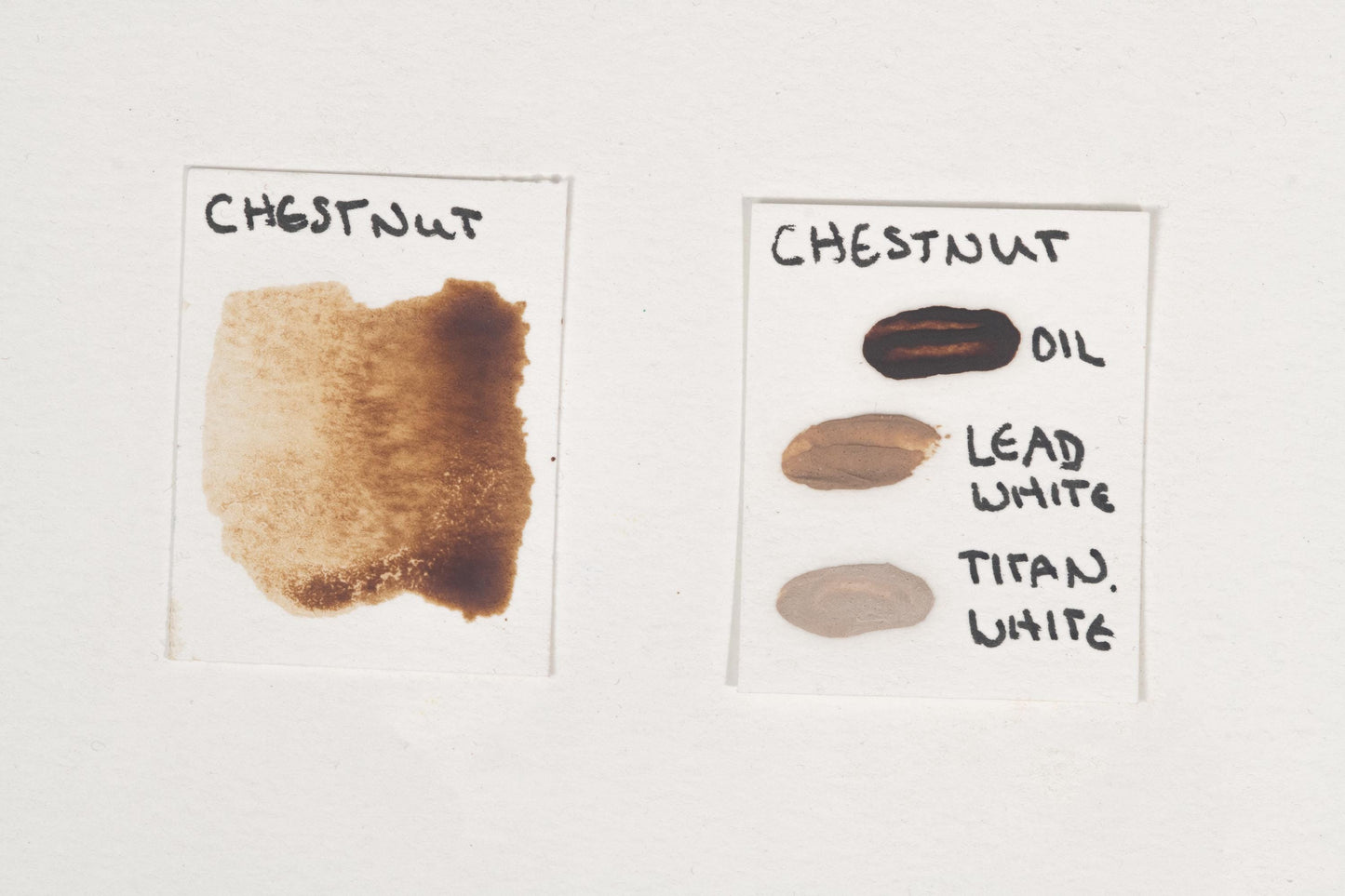Chestnut Lake
Chestnut Lake
Couldn't load pickup availability
Share


Description
Chestnut Lake is a handmade natural lake pigment derived from the tannin-rich bark, leaves, and seed husks of the chestnut tree (Castanea species). The dye is extracted through a traditional boiling and steeping process, after which it is combined with an alum mordant to create an earthy brown to warm brown pigment. This historical process transforms the soluble dye into an insoluble pigment that can be used in various artistic applications.
Chestnut Lake has a rich, warm brown hue with subtle undertones ranging from deep amber to cool umber, depending on the mordant used. It is valued for its organic depth and its ability to produce natural, harmonious tones in painting, textile dyeing, and manuscript illumination. Unlike synthetic browns, Chestnut Lake maintains a soft, natural quality that blends well with other pigments. While it has moderate lightfastness, it is best preserved in protected works such as manuscript illustrations or interior paintings.
History
Chestnut-based dyes and pigments have been used for centuries across Europe and Asia for both textiles and painting. The tannins found in chestnut trees were historically employed in leather tanning, ink-making, and natural dyeing. In medieval manuscript illumination, tannin-based lakes like Chestnut Lake provided warm, natural browns that were used for shading, backgrounds, and decorative elements.
During the Renaissance, plant-derived lake pigments became an essential part of an artist’s palette, offering unique brown tones that complemented mineral earth pigments. Chestnut-based dyes were also common in textile production, where they were used to create warm, earthy fabrics. The durability of these colors was improved with iron mordants, which deepened the brown tone while increasing stability.
Today, Chestnut Lake remains an important pigment for historical reproduction work, natural dyeing, and eco-friendly artistic applications. Artists appreciate its organic warmth and the rich variation of tones it offers in different binders.
Health and Safety
Precautions:
Keep out of reach of children and pets.
Do not consume.
Not for cosmetic or food usage.
For further health information, contact a poison control center.
Do not eat, drink, or smoke near dry pigment. Avoid breathing in fine pigment dust and use a NIOSH-certified respirator with a sufficient rating.
Wash hands after handling.
Pigment Information
Pigment Type: Natural (Plant-based lake pigment) from Castanea species (chestnut bark, leaves, or husks)
Suitable Mediums: Watercolor, Oil, Tempera, Acrylic, Textile Dyeing, Ink
Lightfastness: Good (moderate fading over time in direct sunlight)
Opacity: Semi-translucent
Other Names: Chestnut Brown, Tannin Brown, Castanea Lake


